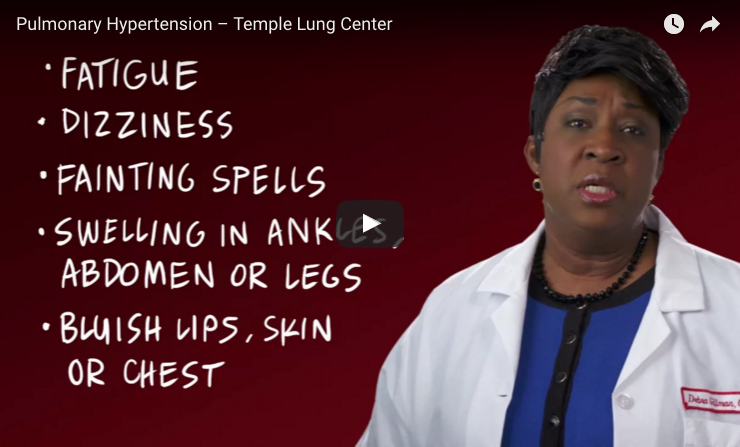What Exactly Is Pulmonary Hypertension?

https://www.youtube.com/watch?v=eRAGygi3iU0
In this video from the Temple Hospital, nurse practitioner, Debra Gillman explains pulmonary hypertension (PH) and some of the most common symptoms associated with the disease.
MORE: Read about the treatment options available for pulmonary hypertension.
Pulmonary hypertension is a type of high blood pressure that affects the pulmonary arteries, responsible for carrying blood from the heart to the lungs. This elevation of blood pressure often forces the right side of the heart to work much harder. It becomes enlarged and weak, losing its ability to effectively pump oxygenated blood to the lungs.
Some of the symptoms patients present include dizziness, fatigue, fluid retention in the legs and ankles, and a bluish tint to the skin or lips. As the disease progresses, patients may also experience shortness of breath, a racing heartbeat, and fainting spells.
MORE: Seven diseases that may cause pulmonary hypertension.
Pulmonary Hypertension News is strictly a news and information website about the disease. It does not provide medical advice, diagnosis or treatment. This content is not intended to be a substitute for professional medical advice, diagnosis, or treatment. Always seek the advice of your physician or another qualified health provider with any questions you may have regarding a medical condition. Never disregard professional medical advice or delay in seeking it because of something you have read on this website.







